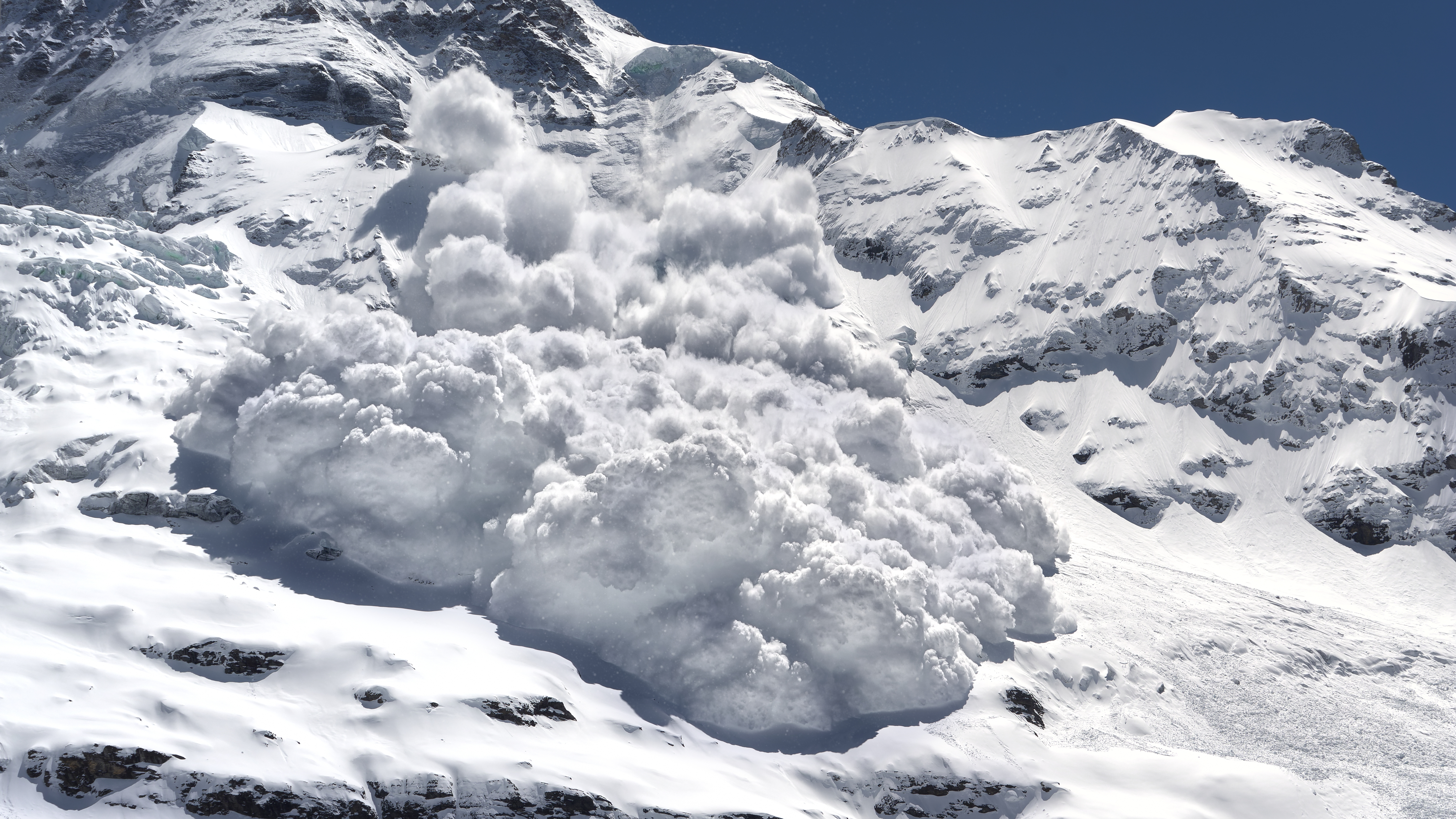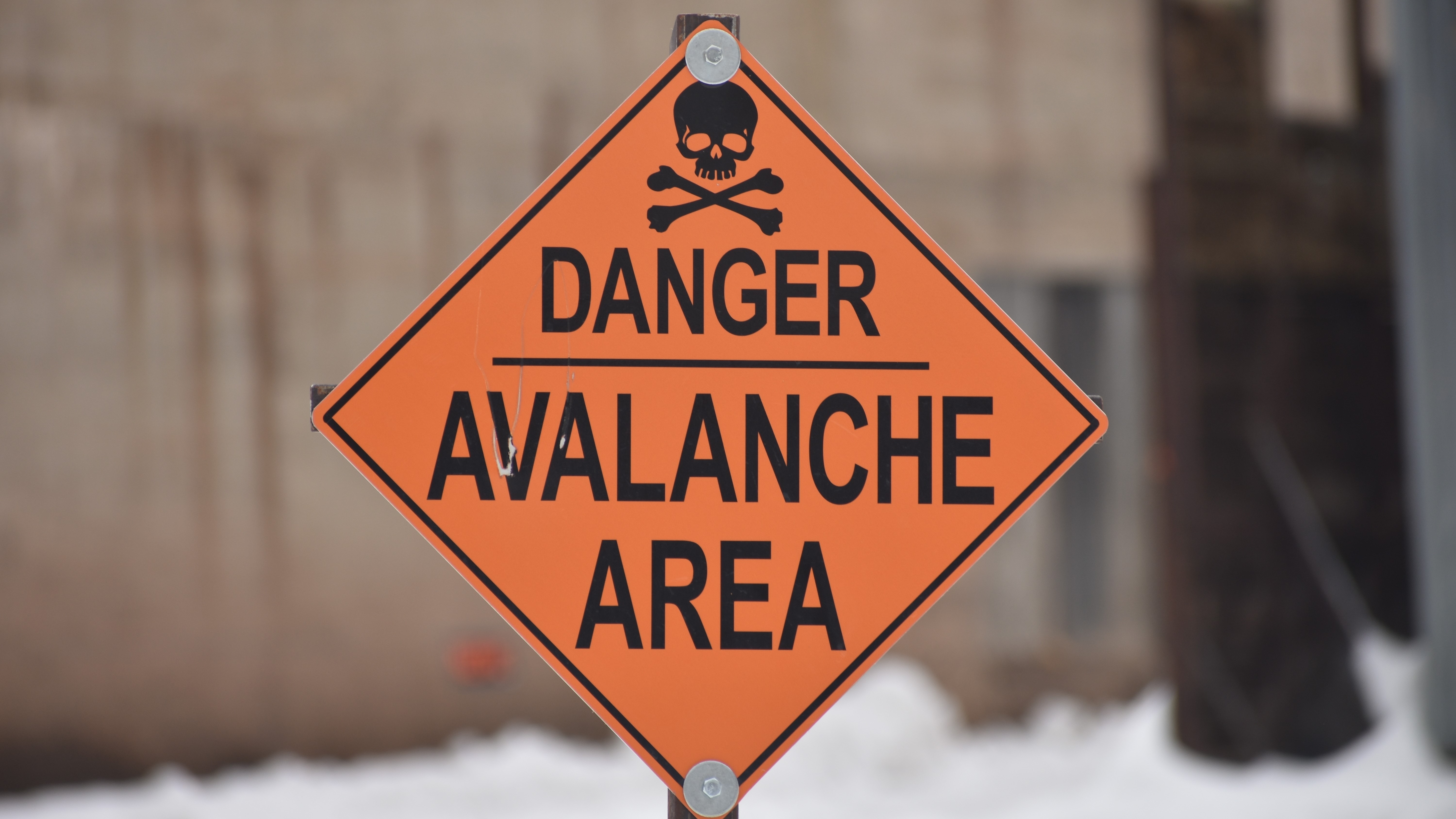More people are surviving avalanches than decades ago — here's why
A study of avalanche survival data shows that survival rates have increased and rescues are faster, but time is still critical for buried victims.

People buried in avalanches are more likely to be rescued quickly and survive the experience today than they were four decades ago, a new study suggests.
Avalanches can kill in a number of ways. Most people caught in these snow flows die of injuries sustained during the avalanche, suffocation after being buried by snow, or hypothermia that sets in as they await rescue. Time is critical — most people who live to tell the tale are rescued within the first few minutes after burial.
The first in-depth studies of avalanche survival were published only 30 years ago and focused on incidents in the Swiss Alps. At that time, fewer than half of the people buried in avalanches survived, and almost all of those who did survive had been rescued within 15 minutes of burial.
Since the 1990s, though, we've developed more reliable ways to predict avalanches, as well as new technologies to improve people's chances of being found and rescued quickly. The new research shows that these advancements have improved avalanche survival.
Related: Body of climber missing for nearly 40 years discovered in melting Swiss glacier
The study, published Sept. 25 in the journal JAMA Network Open, examined records of avalanche survival in Switzerland that were published between 1981 and 2020. Within those four decades, more than 7,000 people were caught in avalanches, including 1,643 people who were "critically buried," meaning snow covered their head and chest.
"If a person caught in an avalanche remains on the surface or is only partially buried, with the head and chest exposed, the survival rate exceeds 90%," said Dr. Hermann Brugger, co-author of the study and founder of the Institute for Mountain Emergency Medicine in Bolzano, Italy. That percentage is based on all reports from 1981 to 1998.
Get the world’s most fascinating discoveries delivered straight to your inbox.
"However, when the head and chest are fully buried, survival drops significantly to around 53%," Brugger told Live Science in an email.
The new research shows that, since 1990, the overall avalanche survival rate in Switzerland has increased from 43.5% to 53.4% — that amounts to about 10 more people saved out of every 100 affected.

That survival rate may still sound low, but time makes a big difference. People buried for less than 10 minutes had a 91% chance of survival, but their odds dropped to 76% after just five more minutes. By the 30-minute mark, fewer than 1 in 3 people survive.
"After 10 minutes of burial, the victim begins to suffer from hypoxia (oxygen deprivation) and hypercapnia (buildup of carbon dioxide)," Brugger said. "Exhaled carbon dioxide accumulates in the surrounding snow, reaching toxic levels that are then rebreathed by the victim."
People who are in a group when an avalanche happens can react immediately to locate and dig out their companions, so they can often help within that crucial 10-minute window. Organized rescue teams take longer — but the average time to rescue has fallen from 45 minutes to 25 minutes over the past 40 years, the new study finds.
"Improvements in the survival rate could highlight new medical treatments after extrication or quicker organized rescue give victims a better chance of survival," said Pascal Haegeli, an avalanche risk management expert at Simon Fraser University who was not involved in the study.
The study authors attribute this success to better avalanche safety training for outdoor-sports enthusiasts and new technologies that enable rescuers to find victims faster. This tech includes digital transceivers that broadcast a survivor's location and wearable radar reflectors that can be pinged from handheld detectors or from the air.
Because the study relied on data recorded between 1981 and 2020, some information — especially on how long survivors were buried — was missing. The researchers used statistical methods to help fill in the gaps, but more real-world records are needed to gain additional insight into what makes a difference in avalanche survival.
That said, "these results may not be fully applicable to other regions, because North America experiences higher rates of trauma in avalanche accidents than Europe due to more trees in areas where avalanches occur," said Simon Horton, a researcher and forecaster with Avalanche Canada who was not involved in the study. Other factors, such as changes in snow’s properties over time, may also shape survival trends, he added.
Brugger emphasized that the safest approach is to avoid situations where you might encounter an avalanche in the first place. He suggested carefully reviewing the weather forecast and the current "avalanche danger scale," which uses weather and snow conditions to predict the likelihood of an avalanche — and just how large and dangerous that avalanche might be. Mountaineers should plan their routes accordingly, ensuring that they make adjustments based on the level of avalanche risk in a given area.
"Carry appropriate safety gear, including an avalanche beacon, shovel, probe and possibly an avalanche airbag," which can be deployed during an avalanche to increase a person's size and make them harder to bury, Brugger added. "In the event of an avalanche, the priority is to keep your airway clear by attempting to place your hands over your mouth and nose. And, finally, never go alone."
Editor's note: This article was updated on Oct. 3, 2024, to include quotes from two experts not involved in the research. The story was first published on Oct. 2.
This article is for informational purposes only and is not meant to offer medical or mountaineering advice.
Ever wonder why some people build muscle more easily than others or why freckles come out in the sun? Send us your questions about how the human body works to community@livescience.com with the subject line "Health Desk Q," and you may see your question answered on the website!

Michael Schubert is a veteran science and medicine communicator. He writes across all areas of the life sciences and medicine but specializes in the study of the very small — from the genes that make our bodies work to the chemicals that could support life on other planets. Mick holds graduate degrees in medical biochemistry and molecular biology. When he's not writing or editing, he is co-director of the Digital Communications Fellowship in Pathology; a professor of professional practice in academic writing at ThinkSpace Education; an inclusion and accessibility consultant; and (most importantly) dog-walker and ball-thrower extraordinaire.


